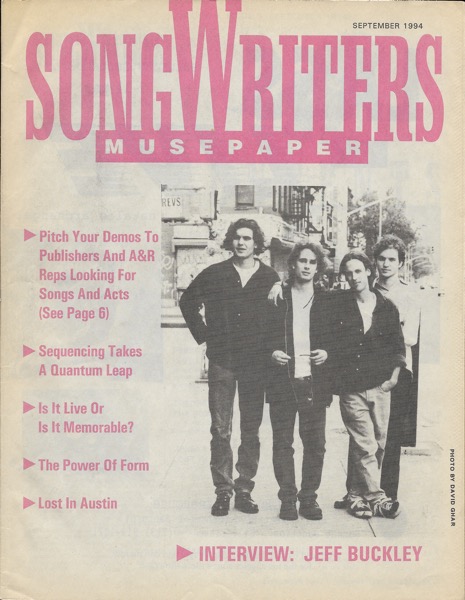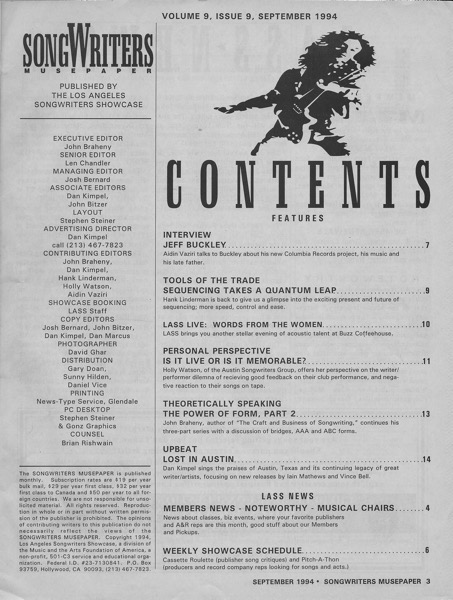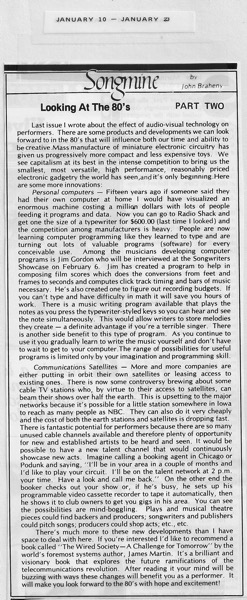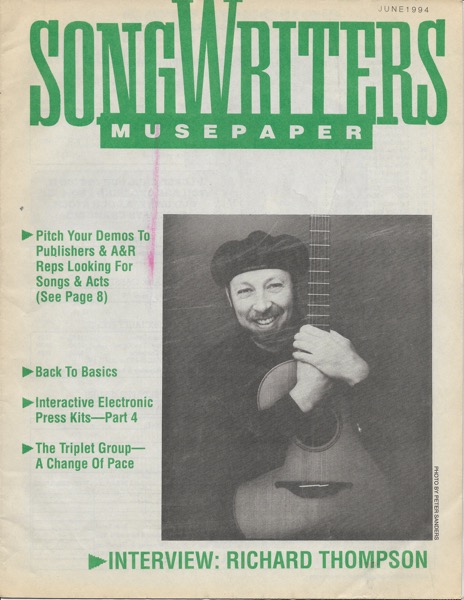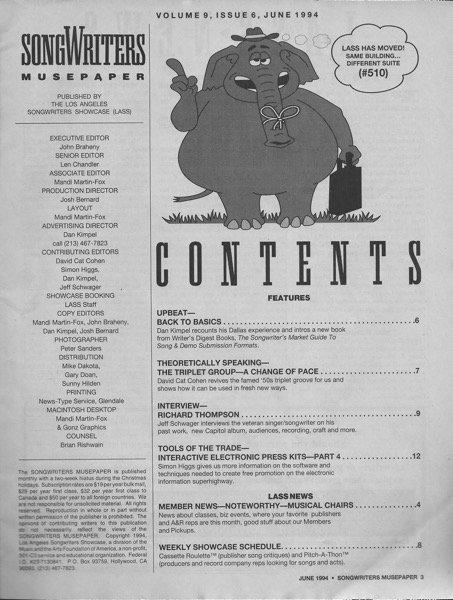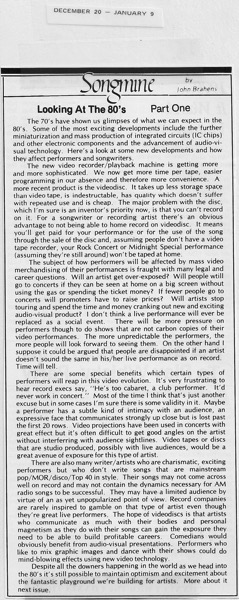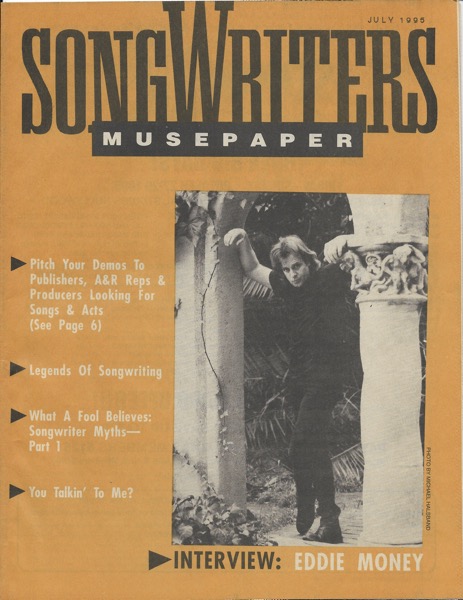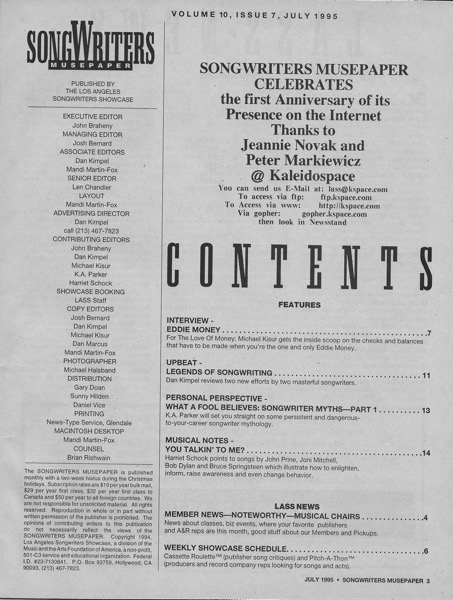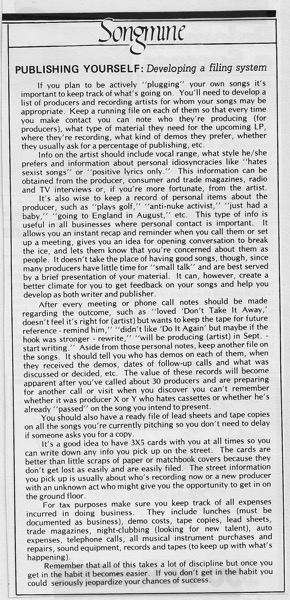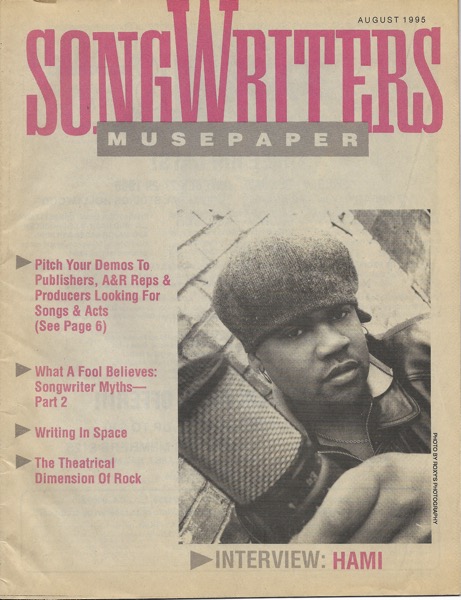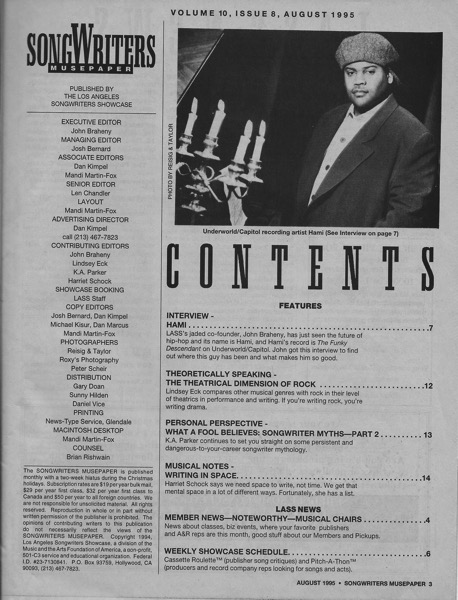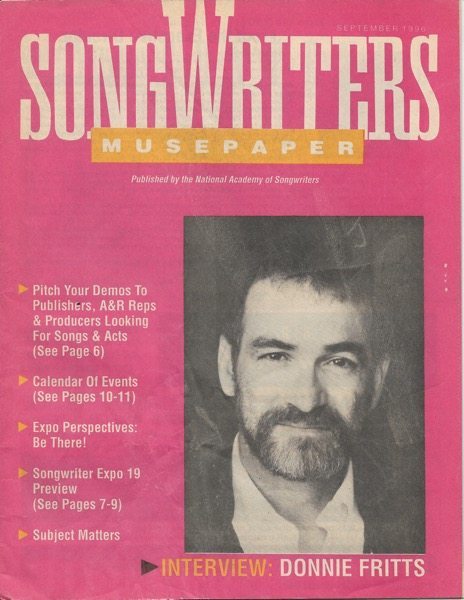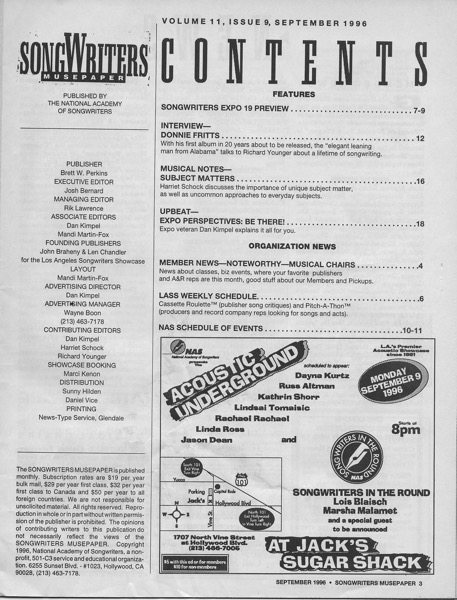A John Braheny Songmine column from the archives…
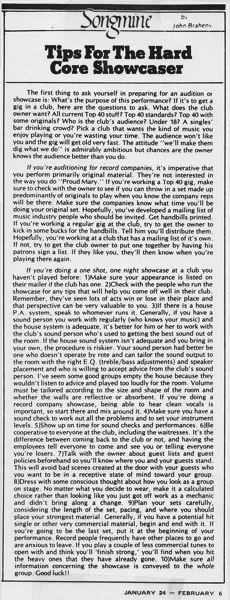
Accession Number: C000000137-027-001 Document/Digital File, “Songmine: Tips for the Hard Core Showcaser by John Braheny”, OCR converted text under same Accession Number
(Digitally converted text. Some errors may occur)
Songmine by John Braheny
Tips !or The Hard core Showcaser
The first thing to ask yourself in preparing for an audition or showcase is: What’s the purpose of this performance? If it’s to get a gig in a club, here are the questions to ask. What does the club owner want? All current Top 40 stuff? Top 40 standards? Top 40 with some originals? Who is the club’s audience? Under 18? A singles’ bar drinking crowd? Pick a club that wants the kind of music you enjoy playing or you’re wasting your time. The audience won’t like you and the gig will get old very fast. The attitude “we’ll make them dig what we do” is admirably ambitious but chances are the owner knows the audience better than you do.
If you’re auditioning for record companies, it’s imperative that you perform primarily original material. They’re not interested in the way you do “Proud Mary.” If you’re working a Top 40 gig, make sure to check with the owner to see if you can throw in a set made up predominantly of originals to play when you know the company reps will be there. Make sure the companies know what time you’ll be doing your original set. Hopefully, you’ve developed a mailing list of music industry people who should be invited. Get handbills printed. If you’re workirig a regular gig at the cluI, try to get the owner to kick in some bucks for the handbills. Tell him you’ll distribute them. Hopefully, you’re working at a club that has a mailing list of it’s own. If not, try to get the club owner to put one together by having his patrons sign a list. If they like you, they’ll then know when you’re playing there again.
If you’re doing a one shot, one night showcase at a club you haven’t played before: 1)Make sure your appearance is listed on their mailer if the club has one. 2)Check with the people who run the showcase for any tips that will help you come off well in their club. Remember, they’ve seen lots of acts win or lose in their place and that perspective can be very valuable to you. 3)If there is a house P.A. system, speak to whomever runs it. Generally, if you have a sound person you work with regularly (who knows your music) and the house system is adequate, it’s better for him or her to work with the club’s sound person who’s used to getting the best sound out of the room. If the house sound system isn’t adequate and you bring in your own, the procedure is riskier. Your sound person had better be one who doesn’t operate by rote and can tailor the sound output to the room with the right E.Q. (treble/bass adjustments) and speaker placement and who is willing to accept advice from the club’s sound person. I’ve seem some good groups empty the house because they wouldn’t listen to advice and played too loudly for the room. Volume must be tailored according to the size and shape of the room and whether the walls are reflective or absorbent. If you’re doing a record company showcase, being able to hear clean vocals is important, so start there and mix around it. 4)Make sure you have a sound check to work out all the problems and to set your instrument levels. 5)Show up on time for sound checks and performances. 6)Be cooperative to everyone at the club, including the waitresses. It’s the difference between coming back to the club or not, and having the employees tell everyone to come and see you or telling everyone you’re losers. 7)Talk with the owner about guest lists and guest policies beforehand so you’ll know where you and your guests stand. This will avoid bad scenes created at the door with your guests who you want to be in a receptive state of mind toward your group. 8)Dress with some conscious thought about how you look as a group, on stage. No matter what you decide to wear, make it a calculated choice rather than looking like you just got off work as a mechanic and didn’t bring along a change. 9)Plan your sets carefully, considering the length of the set, pacing, and where you should place your strongest material. Generally, if you have a potential hit single or other very commercial material, begin and end with it. If you’re going to be the last set, put it at the beginning of your performance. Record people frequently have other places to go and are anxious to leave. If you play a couple of less commercial tunes to open with and think you’ll ‘finish strong,’ you’ll find when you hit the heavy ones that they have already gone. 10)Make sure all information concerning the showcase is conveyed to the whole group. Good luck!!
JANUARY 24 – FEBRUARY 6
Previously in the Songmine Collection:
- Songmine: Looking at the 80’s Part Two by John Braheny
- Songmine: Looking at the 80’s Part One by John Braheny
- Songmine: Publishing Yourself: Developing a Filing System by John Braheny
- Songmine: Administration Deals & Starting Your Own Company by John Braheny
- Songmine: Tough Enough To Publish Yourself? by John Braheny
- Songmine: The Nashville/LA Barrier Crumbles by John Braheny
- Songmine: Message Songs Part 2 by John Braheny
- Songmine: Message Songs Part 1 by John Braheny
- Songmine: Rhyme by John Braheny
- Songmine: “The Knack” A 3rd Point of View by John Braheny
- Songmine: For the non-writing artist: Where do you find original material? by John Braheny
- Songmine: For the non-writing artist: Why you need original material by John Braheny
- Songmine: Scoring Films on a Low Budget Part 6 by John Braheny
- Scoring Films on a Low Budget Part 5 by John Braheny
- Songmine: Scoring Films on a Low Budget Part 4 by John Braheny
- Songmine: Scoring Films on a Low Budget Part 3 by John Braheny
- Songmine: Scoring Films on a Low Budget Part 2: Research and Spotting
- Songmine: Scoring Films on a Low Budget Part 1
- Songmine: The Chances for Advances by John Braheny
- Songmine: What a Record Company Needs to Know – Part 6: Attorneys by John Braheny
- Songmine: What a Record Company Needs to Know – Part 5: The Professional Team by John Braheny
- Songmine: What a Record Company Needs to Know – Part 4: What Makes This Act Marketable? by John Braheny
- Songmine: What A Record Company Needs to Know : Part 3
- Songmine: What A Record Company Needs to Know: Part 2 by John Braheny
- Songmine: What A Record Company Needs to Know: Part 1 by John Braheny
- Songmine: Getting the Most from the Trades Part 4
- Songmine: Getting the Most from the Trades Part 3 by John Braheny
- Getting the Most from the Trades
- Songmine: Publishing III
- Songmine: Leave Your Ego at the Door
- Songmine: “Feedback: Why some publishers won’t give it”
- Songmine: Dealing with Rejection by John Braheny
- “Music in Print” – A Songmine Column from Music Connection Magazine March 19-April 1, 1981
About Songmine and Music Connection Magazine:
John Braheny met Eric Bettelli and Michael Dolan right before they were going to publish Music Connection magazine. Eric and Michael wanted to get their publication out to as many songwriters as they could. They had already heard of the LA Songwriters Showcase, and of John and his partner, Len Chandler. John’s goal was to advertise the schedule of guest speakers and performers at the weekly Showcase… so they made a deal.
They published John’s Songmine column (he had never before written a magazine article!) in their very first edition, in November 1977. Trading out the column for advertising, this arrangement continued for many years. Plus, Eric and Michael came to the Showcase each week and distributed free copies to the songwriters!
Those articles became so popular that (book agent and editor) Ronny Schiff offered John’s articles to F&W Media, where they became the backbone of John’s textbook, The Craft and Business of Songwriting. As a follow-up, Dan Kimpel (author, songwriter, teacher), who had also worked at LASS, took on the Songwriting column at Music Connection magazine which continues to this day! You can subscribe to get either hard copies or online.
